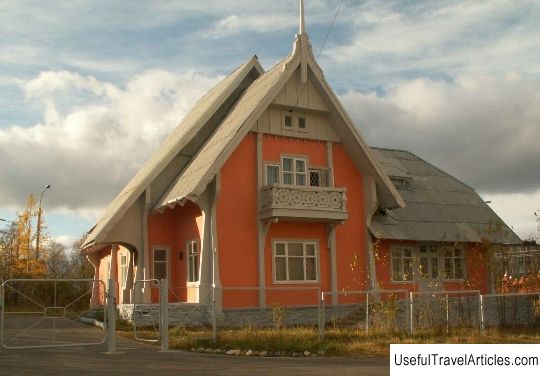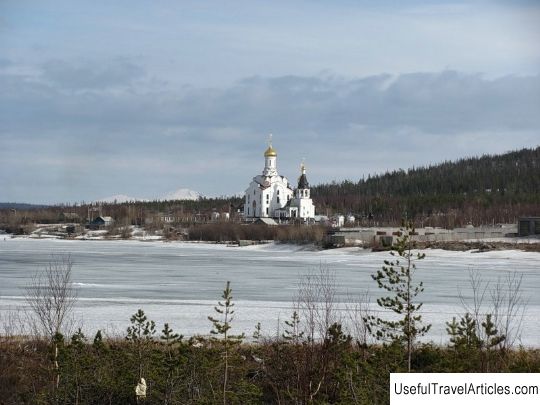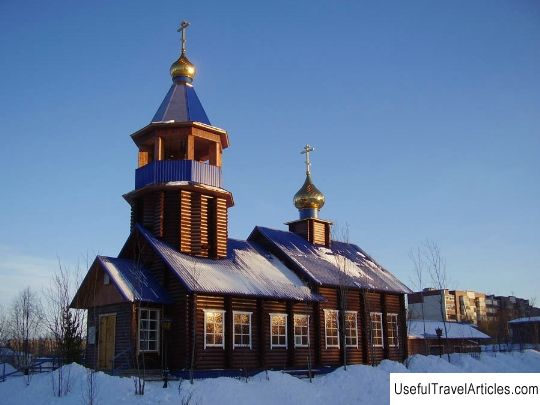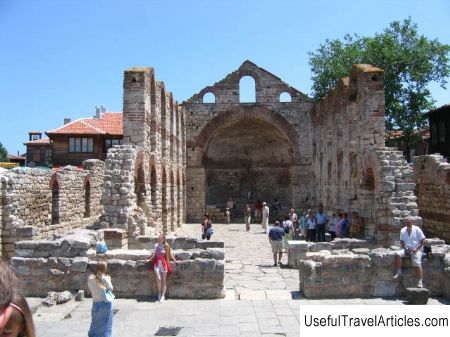Colored Stone Museum description and photo - Russia - North-West: Monchegorsk
Rating: 8,5/10 (678 votes) 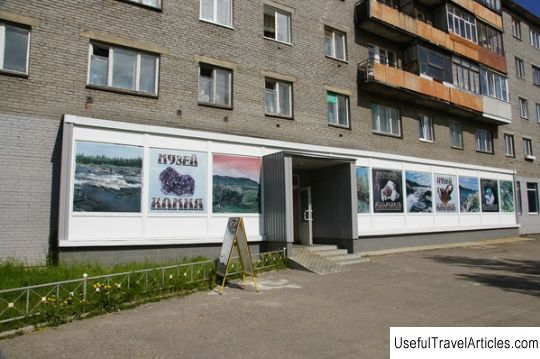
Colored Stone Museum description and photos - Russia - North-West: Monchegorsk. Detailed information about the attraction. Description, photos and a map showing the nearest significant objects. Photo and descriptionThe Colored Stone Museum is located in Monchegorsk. It was formed in 1970 on the initiative of the geologist Vladimir Nikolaevich Dava. He lived and worked in Monchegorsk in 1969-1984. Over the years, Vladimir Nikolaevich put his heart and soul into the creation and development of the museum. He wrote the books "Stones of Joy" and "Amethyst drives away dashing thoughts", which were published by the Murmansk Book Publishing House. V.N. Dove in 1984 and was buried in Monchegorsk. Initially, the museum was organized for geologists, but soon they knew about it not only in the city, but also outside it. In the Murmansk region, famous for its rich mineral deposits, there are several mineralogical museums where visitors can get acquainted with the local mineral resources. Howbeit, A special feature of the Monchegorsk Museum is the presence in its exposition of samples and products from the most beautiful minerals, decorative rocks from numerous parts of Russia, Armenia, Kazakhstan, Ukraine, and also magnificent gems of the Kola Peninsula are presented here. The museum exposition, which opens it and which is the "visiting card" of the Kola Peninsula, is represented by amethyst brushes: lilac, lilac, dark purple. All of them are from the Cape Korable field (in the south of the Kola Peninsula). In the local bowels, there are many rare minerals, one of which is eudialyte. Astrophyllite from the Khibiny Eveslogchor deposit can be seen on display. Sometimes its elongated, needle-like, lamellar crystals create radial-radiant aggregates, the so-called astrophyllite stars or, as they are also called, "the sun of Lapland", as their color is golden-bronze, and their luster is pearlescent. The largest museum specimen is kyanite, its homeland is the western Keivy. Kyanite crystals are sky blue. The museum exhibits many varieties of quartz brought from different parts of Russia and other republics. Crystals of water-transparent rock crystal compete with transparent smoky quartz, greenish-gray prase, resinous black morion. Chalcedony - hidden crystalline variations of quartz are represented by carnelian, chrysoprase, kahalong, agate. A separate showcase in the exposition - "natural picture gallery" - picture and landscape jasper (homeland - Altai and the Urals). Fancy patterns, evening twilight and seascapes are formed by bright contrasting (red, green, black) and the most delicate (pink, fawn) flowers. The collections of the Colored Stone Museum are regularly replenished, there are about 3500 items. In 2001, the geologists of OJSC `` Central Kola Expedition '' donated to the museum for permanent storage a collection of minerals (more than 2000 samples) of Professor, Doctor of Geological and Mineralogical Sciences from Leningrad I.I. Chupilina. The collection contains many rare minerals from deposits in Russia and other countries: China, Mongolia, Korea, Czech Republic, Germany, USA and so on. The museum workers are sure that this collection of the museum will be of interest to specialists and lovers of stone. The museum is engaged in extensive exhibition work. These are traveling exhibitions from their own funds, and stationary ones from the funds of other regional museums and private collections: samples of colored stone, products, paintings from stone chips, figurines made of natural stone made by stone-cutters of Monchegorsk. In addition to exhibition activities, the Museum of Colored Stone is engaged in scientific and educational work. His collection contains many interesting lectures for students and adults: "Natural Monuments of Murman", "Secrets of Stone Names", "Freshwater Pearls of the Kola Peninsula" and others. The Colored Stone Museum is the highlight of the city of Monchegorsk. More than 250,000 people have already visited it.      We also recommend reading Ethnological Museum (Museum fur Volkerkunde) description and photos - Austria: Vienna Topic: Colored Stone Museum description and photo - Russia - North-West: Monchegorsk. |
